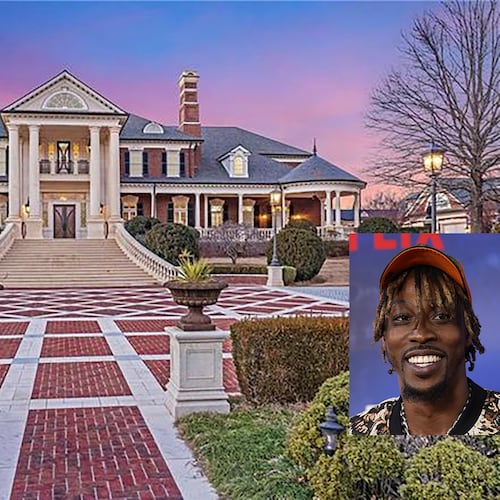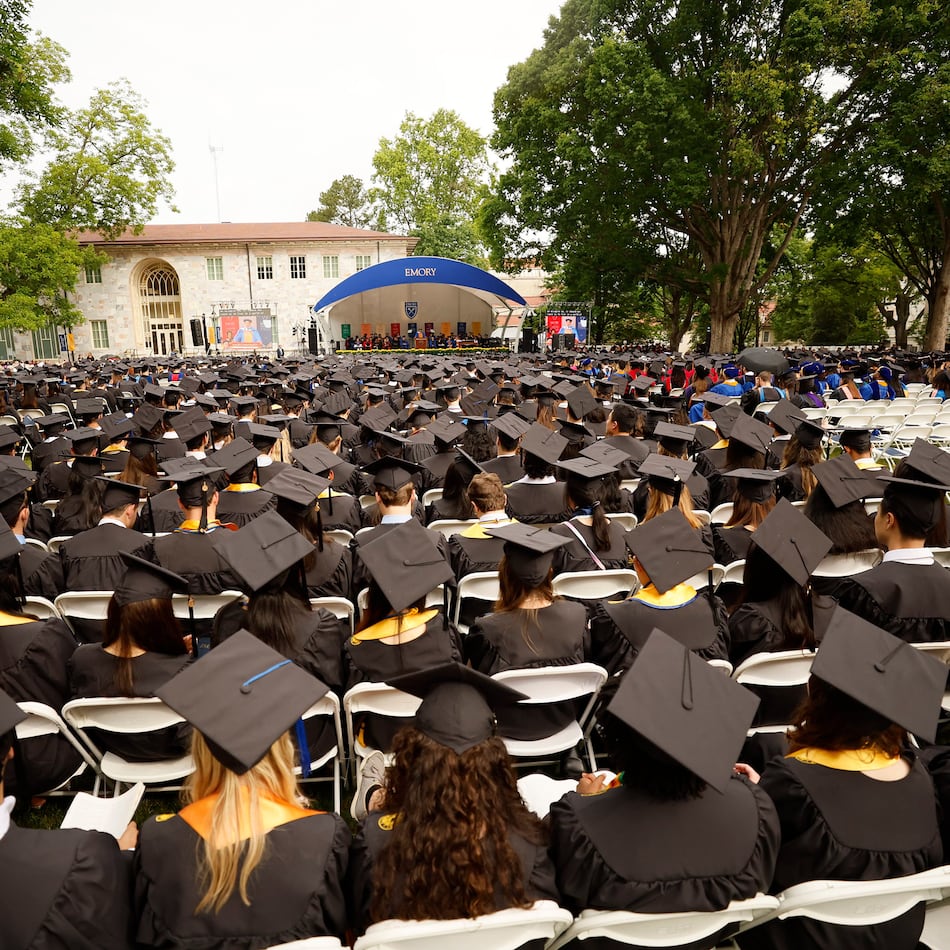On a September morning in 1990, thousands gathered at Underground Atlanta and exploded with joy when they learned the 1996 Summer Olympics were coming.
It was a stirring event where Atlantans — young, old, black, white, rich, poor — united in shared civic enthusiasm. It was the kind of moment former Mayor Andrew Young envisioned 15 months earlier, in June 1989, when he yanked a ribbon that sounded a train whistle signifying downtown's $142 million rebirth.
This was going to bring people back, the exuberant mayor said. "What we've done is put in a new heart for the center of the city."
A Gwinnett County man's comment was the front-page headline the next day: "Very definitely, we'll be back."
It is unknown if the man ever returned to Underground. That day marked the second time the downtown attraction opened to rave reviews — the first was in 1969. And both times it fizzled at maintaining a steady flow of return visitors.
Underground has long lost money. Twenty years after its reopening, the city still ponies up $8 million a year to pay off the construction bonds. Ongoing woes have spurred yet another plan to remake Underground. This time it's a $450 million proposal to gut the venue and build a video lottery casino, upscale restaurants and a 29-story hotel.
And maybe change the name. Dan O'Leary, whose company has run Underground since 1999, says public perception is so bad a new name can't hurt.
The reasons for Underground's troubles are many: Not the right shopping mix. Not enough entertainment. The rise of competing attractions. Not enough attractions nearby. The no-man's land that is the adjoining Five Points MARTA plaza. But one reason permeates all. For many, "Underground" has become civic shorthand for a dangerous inner-city albatross.
Midtown resident John Genter is a young accountant who came to Atlanta six years ago and soon learned the downtown venue wasn't really an entertainment option.
"You hear the jokes," he said, "that you need chain mail or bullet-proof vests."
Atlanta police Maj. Khirus E. Williams, head of the downtown zone, called Underground "very safe," noting there were few major crimes in the past year at Underground or Five Points. When a reporter cited a stabbing death in October on Peachtree Street not far from the Underground entrance, police blamed an old enemy of the attraction: perception.
"A crime can be a block or two away but (Underground) is a reference point," said Lt. Anthony McCommons, the precinct commander.
Joe Martin, who headed the organization that rebuilt Underground, grows sad discussing his beloved project.
"It was a classic public-private partnership. It was fully leased," Martin said. "Then one thing after another happened."
In 1990, just weeks before the Olympics announcement, a man was shot to death at the entrance of Underground in a gang fight police said was between the Crips and Bloods. In 1992, the aquittal of Los Angeles policemen in the beating of Rodney King spurred violent disturbances throughout downtown Atlanta. Groups of teens and young men rampaged through Underground, breaking windows and overturning carts.
"It lasted 10 minutes, but the psychological damage was devastating," Martin said. Mall sales dropped 40 percent the next month. "It shows how fragile perceptions are. Underground never recovered."
A "vicious cycle" ensued, he said. "Underground had less and less of a mixed audience," which reinforced opinions of many whites that it was not for them, he said.
"It's almost as if Underground Atlanta is a monument to racial perceptions and fears."
Good times and bad
Say "Underground," and longtime Atlantans harken back to the days when thousands of partygoers ambled the cobblestone streets, swilled Flaming Hurricanes, listened to Piano Red pounding out blues and ate at Dante's Down the Hatch. The nightlife scene, a labyrinth of turn-of-the-last-century storefronts forgotten when the city raised its streets, opened in 1969.
Atlanta had landed the Braves and the Falcons, and was feeling good about being a first-rank American city. Underground faced few competing venues and nightlife in the region.
But the golden era was fleeting. Surrounding counties softened their liquor laws, siphoning off revelers. And with the election of a black mayor, Atlanta experienced white flight.
In 1974, The Atlanta Journal wrote a story headlined "Problems mount for Underground." Crowds had dwindled. Its proprietor was in financial trouble. The story, as news stories have for 35 years, quoted a cop assuring the public the mall itself was safe. It added that many Atlantans, especially white suburbanites, feared the area was crime-ridden.
Construction of the MARTA rail line in the late 1970s gouged a huge hole in the declining attraction, and it closed in 1980.
The new incarnation seemed to follow a similar arc. It reopened to fanfare in 1989 with a mix of nightlife and shops like Victoria's Secret and Eddie Bauer. But five years later, dozens of stores had closed and the complex owed the city millions in back rent. A city official called it a "sinking ship." An aide to then-Mayor Bill Campbell said the mall's theme was not in line with the city. He suggested civil rights or Afrocentricity.
The 1998 book "Someone Else's House: America's Unfinished Struggle in Integration" recounted Underground's struggles. The late Lawrence Gellerstedt Jr., the Atlanta building magnate who was on the founding board of Underground's oversight committee, put it this way in the book: "Underground is the best place to put the thermometer for race relations. It's a tribute to the progress we've made. But it documents: we ain't solved the problem yet. And it still may belly up on account of race relations."
Andrew Young disagrees. He says Underground's shortcomings are more about marketing and mall mix. The attraction is 20 years old; all malls need reconfiguration after 10 to 15 years, he said.
Young hasn't been to Underground in a while — he doesn't like its parking setup. But he still thinks it can be Atlanta's Main Street. "It has to be a good-time place," he said, adding, "I'm not sure what it takes to make it a good-time place."
Maybe a new variety of music scenes, including country, could be a draw, he said. In fact, the city tried to create a nighttime buzz by bringing in new nightclubs in 2004 after extending Underground's closing time to 4 a.m. The venture never really caught on.
Young adds that Underground's image isn't about race, but culture and class. "I don't think we had a crime problem but we had large numbers of teens hanging around; they ran off the tourists," he said. Atlanta has many poor people. "And poor people tend to hang around downtown."
By the time O'Leary's firm took over the mall's operation in 1999, occupancy rate had dwindled to less than 50 percent. O'Leary purchased the troubled South DeKalb Mall in 1996, upgraded it and later resold it for a profit. He has similarly tried to draw tenants and shoppers at Underground and says occupancy is now 75 percent.
Albert Maslia, who once had three stores in Underground, calls the venue "safe, very safe." But he complains it is a victim of the shabby surrounding streetscape populated by vagrants. "You have that no-man's zone from Five Points to Underground," he said. "It's a disgrace."
O'Leary promises to spend $5 million a year on security if the new grand plan is put into action because "we will not make a half a billion dollar investment and not make sure it's safe, secure and clean."
Then O'Leary added: "To make Underground the success it should be, it'll take a really big idea."
If Atlanta bites on the plan, he vows history won't repeat itself.
About the Author
The Latest
Featured


